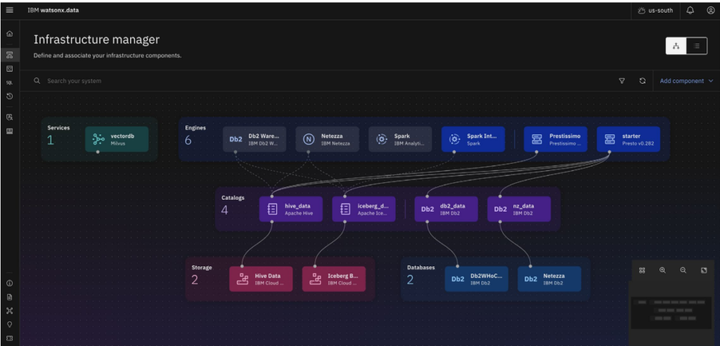Accelerating UFC Fan Revenue with Generative AI

Generative AI is taking sports entertainment to new heights, unlocking massive opportunities for revenue growth and fan engagement. As the Ultimate Fighting Championship (UFC) pioneers cutting-edge fan experiences, enterprise leaders across industries are watching closely to see how artificial intelligence can drive unparalleled personalization, operational efficiency, and new revenue streams.
Even for a globally dominant sports property like the UFC—with an audience of over 700 million fans across 170 countries [1]—staying relevant and lucrative has become an ever-evolving challenge. Pay-per-view events, once the undisputed champion of revenue, now compete against dozens of streaming platforms, e-sports competitions, and interactive events. Meanwhile, fans demand real-time analytics, personalized content, and immersive digital encounters that were unthinkable just a few years ago.
This blog post dives deep into how generative AI, driven by IBM’s watsonx platform and Granite large language models, is breathing new life into UFC’s fan strategies. We’ll explore the challenges facing enterprise leaders, uncover the data-driven insights powering UFC’s success, and offer a practical roadmap to apply these lessons in your own organization to boost revenue and fan loyalty.This blog post dives deep into how generative AI, driven by IBM’s watsonx platform and Granite large language models, is breathing new life into UFC’s fan strategies. We’ll explore the challenges facing enterprise leaders, uncover the data-driven insights powering UFC’s success, and offer a practical roadmap to apply these lessons in your own organization to boost revenue and fan loyalty.
Pressures and Pain Points in Sports Monetization
1. Meeting Skyrocketing Fan Expectations
Modern sports audiences crave immediate statistics, tactical breakdowns, and interactive features across all devices. A significant portion of UFC’s 700+ million global fans [1] is tech-savvy, hyper-connected, and unwilling to tolerate outdated forms of engagement. Viewers want ongoing insights about match outcomes, fighter performance, and personalized recommendations in real time. Failure to meet these rising expectations risks dissatisfied fans, declining subscriptions, and reduced event attendance.
2. Global Reach, Local Relevance
The UFC broadcasts to more than 170 countries [2], each with unique languages and cultural preferences. Tailoring content to diverse global fans is complex and expensive if done manually. Enterprise leaders can find themselves juggling multiple platforms and languages without a unified data strategy—leading to inconsistent user experiences and potential revenue gaps.
3. Competitive Saturation and Short Attention Spans
Entertainment choices abound for sports fans—from e-sports tournaments to popular streaming platforms. If a UFC broadcast or a digital platform fails to engage viewers within seconds, those potential consumers can swiftly move on. Maintaining audience interest and converting casual viewers into paying subscribers is a formidable challenge when online distractions are infinite.
4. Data Overload and Fragmentation
UFC events generate colossal amounts of data: fighter performance metrics, social media sentiments, viewer demographics, and more. However, raw data is only as good as an organization’s ability to analyze, segment, and act upon it in real time. For many enterprises, data silos and outdated infrastructure hamper the potential of advanced analytics. If data remains fragmented, crucial revenue opportunities—like targeted ads or tailored subscription tiers—fall through the cracks.
5. Rising Costs vs. ROI Concerns
Embracing advanced AI platforms requires sizable investments in IT infrastructure, talent acquisition, and cross-functional training. Enterprise leaders can be wary of whether the returns justify the expenditures. While the UFC’s revenue streams now stretch far beyond traditional pay-per-view (PPV), balancing these new investments against the promise of generative AI-driven profitability remains a delicate act.
By understanding these core challenges, the UFC took a bold step: partner with IBM to integrate generative AI into nearly every facet of its fan engagement strategy. The results have paved the way for new sponsorship models, dynamic ticket pricing, and personalized content experiences that, together, drive higher fan spending.
Insights from IBM’s Generative AI — The Edge UFC Needed
1. Real-Time Personalization and Predictive Analytics
One of the UFC’s biggest breakthroughs came with real-time personalization. AI-driven analytics under the hood of IBM’s watsonx platform parse fighter tendencies, audience engagement data, and social media sentiment to create relevant, minute-by-minute viewer experiences. Whether it’s delivering targeted merchandise offers mid-fight or highlighting custom stats for fans interested in a particular fighter, personalized touchpoints have proven to increase average revenue per user (ARPU) [3].
Statistic in Focus: IBM’s AI-powered personalization extends even to UFC Fight Pass, leading to “significantly enriching” viewer experiences and increasing subscription rates [4]. These enhancements range from recommending fighter documentaries to curating highlight reels based on a user’s historical viewing patterns.
2. Merging Technology with Immersive Experiences
Generative AI isn’t just churning out text or automated commentary; it’s also enabling interactive overlays, real-time polls, virtual reality (VR) experiences, and advanced predictive analytics for fans. The UFC Insights Engine—a solution built with IBM’s Granite large language models—offers projections on fight outcomes, fighter stamina, and methods of victory during broadcasts [5]. This layer of immersion keeps fans glued to the event and opens up new advertising and sponsorship slots that command premium prices.
Example of Scale: By 2025, the UFC Insights Engine is expected to reach millions of fans in 170 countries with real-time stats, hints, and data-driven narratives [2], leading to expanded subscription revenue and greater brand loyalty for sponsors who want their ads aligned with advanced tech experiences.
3. Reducing Operational Costs Through AI Efficiencies
Beyond generating new revenue, generative AI is helping streamline UFC’s operations. IBM’s technology for data integration, event planning, and predictive analytics ensures that UFC can allocate resources effectively, from staffing levels to broadcast setups. Sources indicate that AI-driven predictive maintenance can reduce potential downtime, saving on repair costs and preventing revenue losses from broadcast interruptions [6].
Notable Cost-Saving Example: IBM watsonx Assistant can save up to $5.50 per contained conversation, potentially translating into more than $13 million over three years [7]. Although this figure is often cited in customer service contexts, the concept of automating fan inquiries or support services around ticketing, subscriptions, or merchandise can apply directly to UFC’s large fan base.
4. Diversifying Revenue with Tiered Subscriptions and Sponsorships
By harnessing advanced AI, UFC leadership explored new ways to segment its fanbase. This resulted in tiered subscription models offering premium levels of real-time analytics, behind-the-scenes insights, and early-bird ticket access. With generative AI, the UFC can also craft hyper-targeted sponsorship deals—matching sponsors with the segments most likely to engage and spend.
Sponsor Opportunity: AI helps advertisers place promotional content at precisely the right moment—such as a critical strike in a close match—maximizing engagement. This level of precision commands higher sponsor fees, as measured by rising ROI for partnered brands [8].
5. Leveraging Global Localization
IBM’s AI capabilities allow the UFC to serve localized messages and content in multiple languages, capturing diverse audiences’ attention. For instance, fans in Latin America might receive Spanish-language broadcast overlays, while fans in Japan can experience specialized in-app commentary. This commitment to local resonance boosts brand trust and fosters deeper engagement, translating to higher international revenue.
Relevance for Enterprise Leaders: If your organization has a worldwide reach, AI-driven localization can reduce friction, elevate brand perception, and unlock revenue from previously under-served markets—all while automating or streamlining the content translation process.
How IBM and UFC Built a Winning Alliance (Technology, Business Process, Leadership)
1. Unified Data Architecture and watsonx
The first hurdle was data centralization. UFC event data, social media feeds, fighter performance logs, and subscription details needed to flow into a unified system. IBM’s watsonx provided the powerful backbone for collecting, analyzing, and distributing this data in real time [5]. Instead of piecemeal dashboards that only senior analysts could interpret, UFC teams gained an integrated platform for cross-departmental insights.
- Data Speed: By processing real-time fight statistics—like average strike accuracy or takedown defense rates—watsonx could feed broadcast overlays that update second by second.
- Data Scale: With hundreds of millions of fans, the system had to handle massive spikes in user activity during high-profile fights without crashing or lagging.
2. Granite Large Language Models for Hyper-Personalization
IBM’s Granite LLMs power advanced natural language understanding, enabling deeper storylines and real-time commentary that goes beyond generic fight updates. During a high-intensity title match, the AI can instantly generate a concise breakdown of a fighter’s past performance, highlight known weaknesses in grappling or striking, and present these to the commentator or the app interface [1].
- Business Impact: This customized storytelling heightens fan immersion and keeps casual viewers on the platform longer, increasing the odds they’ll purchase merchandise or upgrade their subscriptions mid-bout.
3. Leadership Alignment and Cross-Functional Collaboration
For a large enterprise like UFC, successful AI adoption demanded leadership buy-in from day one. Executives, event planners, marketing teams, and data scientists had to align on key performance indicators (KPIs) such as fan engagement minutes, conversion rates, subscription renewals, and incremental sponsor deals.
- Key KPI Gains:
- Subscription Growth: The targeted content approach led to improved upsell and cross-sell of higher-tier offerings [4].
- Sponsorship Revenue: More precise targeting of audience segments resulted in new sponsor categories, including gaming companies and interactive tech firms [2].
- Pay-Per-View (PPV) Retention: Enhanced broadcast experiences and integrated social media hype cycles helped reduce PPV churn and keep returning fans locked in for major events [9].
4. AI-Driven Business Process Refinement
From scheduling fights at optimal fan-engagement windows to perfecting dynamic ticket pricing, UFC management turned to AI for near-instant feedback loops. Predictive analytics estimated attendance patterns and merchandise demands, allowing UFC to avoid under-stocking or over-stocking goods.
- Illustrative Use Case: By analyzing advanced forecasts, UFC quickly recognized surging interest in fighter-generated meet-and-greet events. Additional premium passes for in-person fan experiences sold out within hours. This success underscores the synergy between generative AI’s data storytelling and the operational agility of business units.
5. Enhancing Customer Understanding for Long-Term Loyalty
IBM’s AI solutions also harness social media data to gauge fan sentiment and trending topics. In real time, the UFC can spot potential reputational risks or fan preferences—such as interest in female fighters, rising prospects, or legendary rematches. By preemptively tailoring marketing messages around popular storylines, the UFC fosters deeper emotional connections.
- ROI on Sentiment Monitoring: Engaging fans with content closely tied to their interests has amplified brand loyalty and led to sustained growth in ARPU. More specifically, AI-fueled personalization fosters a sense of exclusivity that incentivizes fans to remain subscribed, often at premium levels [10].
Taken together, these technology, business process, and leadership considerations highlight how generative AI becomes not just another tool, but the strategic engine behind UFC’s revenue and engagement gains.
Practical Strategies to Replicate UFC’s Success
Building upon the UFC’s blueprint, enterprise leaders can integrate generative AI to engage customers more deeply, broaden revenue streams, and sharpen operational efficiency.
1. Establish a Centralized Data Infrastructure
- Short-Term Move: Conduct a data audit to map out existing silos—like CRM platforms, social channels, and transactional systems. Build or adopt a central repository that supports real-time streaming of key metrics.
- Long-Term Strategy: Invest in an enterprise-grade AI platform capable of handling data integration from multiple sources. According to IBM’s success with UFC, unified data flow is the bedrock for advanced analytics, personalization, and new product offerings [5].
2. Embrace Predictive Tools for Dynamic Pricing and Promotions
- Short-Term Move: Implement a pilot program analyzing real-time user engagement to adjust ticket or product pricing. Even a 5-10% optimized pricing improvement can yield substantial revenue gains for large-scale events.
- Long-Term Strategy: Fully automate dynamic pricing using AI algorithms. By analyzing historical patterns and real-time surges in fan interest (e.g., during a championship round), you can instantly trigger promotions that convert impulsive buyers more effectively.
3. Create Tiered Subscription Models with Custom AI-Fueled Experiences
- Short-Term Move: Segment your existing audience based on engagement metrics—like watch time, favorite content categories, or interactive features used. Offer them a premium tier with advanced analytics, exclusive content, or early access to live events.
- Long-Term Strategy: Expand personalization in your subscription tiers. Use generative AI to create exclusive behind-the-scenes stories, real-time chatbots for high-tier members, and specialized VR or AR experiences. UFC’s multi-tiered approach, powered by IBM’s Granite LLMs, has proven that fans will pay extra for deeper personalization [1].
4. Drive Sponsorship Value with Targeted Audience Segmentation
- Short-Term Move: Start small by offering targeted sponsorship packages for local or smaller audiences. Track engagement levels—click-through rates, conversions, brand mentions on social media—to show real data on ROI for sponsors.
- Long-Term Strategy: Scale up your AI-driven sponsor matching. Identify audience clusters across demographics and psychographics, then pair them with sponsor categories that resonate. According to various UFC sources, this approach allows sponsors to create customized campaigns aligned with specific fighter matchups or trending topics [8].
5. Increase Operational Efficiencies Through AI Automation
- Short-Term Move: Deploy AI chatbots to handle routine fan inquiries (e.g., fight schedules, fighter bios, ticket pricing). This can free customer service reps for higher-level interactions and potentially save millions in call-center costs over time [7].
- Long-Term Strategy: Extend AI automation into event logistics—predictive maintenance of broadcast equipment, automatic reordering of popular merchandise, and dynamic staff scheduling. Real-time cost savings can reallocate resources to strategic priorities like marketing or technology upgrades.
6. Foster a Culture of Experimentation and Continuous Improvement
- Short-Term Move: Create cross-functional “innovation squads” that quickly test AI-driven features—for instance, an in-app prediction poll that interacts with a generative AI commentator. Evaluate user feedback and iterate.
- Long-Term Strategy: Make data-driven experimentation an ongoing discipline. Evaluate emerging AI functionalities such as voice-based analytics, advanced AR experiences, or even AI-generated highlight reels that could become new monetizable assets.
By focusing on these strategies—honed from the UFC’s real-world application of IBM’s AI—enterprise leaders can transform ephemeral fan interest into robust, long-lasting revenue streams.
The Lasting Impact of Generative AI on Sports
The UFC’s collaboration with IBM demonstrates how generative AI can revolutionize the entire sports entertainment value chain—from enthralling live broadcasts and personalized merchandise to data-driven ticket pricing and dynamic sponsorships. With fans demanding more interactive and intimate experiences, enterprise leaders face mounting pressure to innovate or risk falling behind.
By weaving AI into each step of the fan journey, the UFC doesn’t merely entertain— it monetizes enthusiasm in ways that resonate globally. High engagement translates into bigger sponsorship deals, boosted subscriptions, and operational efficiencies that free capital for future innovation. This is more than a technological leap; it’s a leadership commitment to continuous growth.
If your organization hopes to replicate the UFC’s success, the prescription is clear: lay the groundwork with a centralized data strategy, embrace AI-powered personalization at every turn, and foster a culture that welcomes experimentation. Backed by generative AI, these tactics can help any enterprise tap into new revenue streams, strengthen customer loyalty, and secure a winning edge in a crowded digital marketplace.
Subscribe for Exclusive AI Insights
Stay ahead of the pack with the latest thought leadership on AI-driven innovation. Sign up for our newsletter today to receive in-depth case studies, expert interviews, and cutting-edge strategies on how leading brands like the UFC harness generative AI to capture more fan revenue. Join our community of forward-thinking enterprise leaders and transform your business—one AI-powered step at a time.
References
[1] https://www.ufc.com
[2] https://www.ufc.com/news/ufc-names-ibm-first-ever-official-ai-partner
[3] https://finance.yahoo.com/news/ibm-study-fan-engagement-consumption-040100275.html
[4] https://www.ufc.com/fightpass
[5] https://community.ibm.com/community/user/ai-datascience/blogs/nickolus-plowden/2024/11/15/ibm-and-ufc-to-develop-ufc-insights-engine-built-w
[6] https://quantaintelligence.ai/2024/10/07/technology/how-companies-are-reducing-downtime-with-intelligent-systems
[7] https://www.ibm.com/blog/independent-study-finds-ibm-watson-assistant-customers-accrued-23-9-million-in-benefits/
[8] https://www.sportsbusinessjournal.com/Articles/2024/11/14/ufc-ibm/
[9] https://www.foxbusiness.com/sports/ufc-ibm-team-up-develop-enhanced-fight-analysis-engine-using-watsonx
[10] https://techedgeai.com/ibm-partners-with-ufc-to-revolutionize-fan-experience-using-ai/


